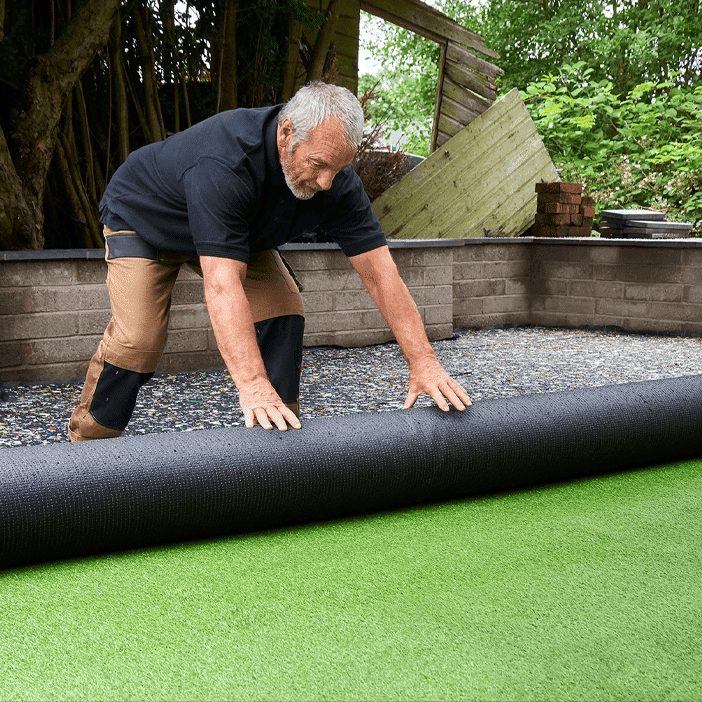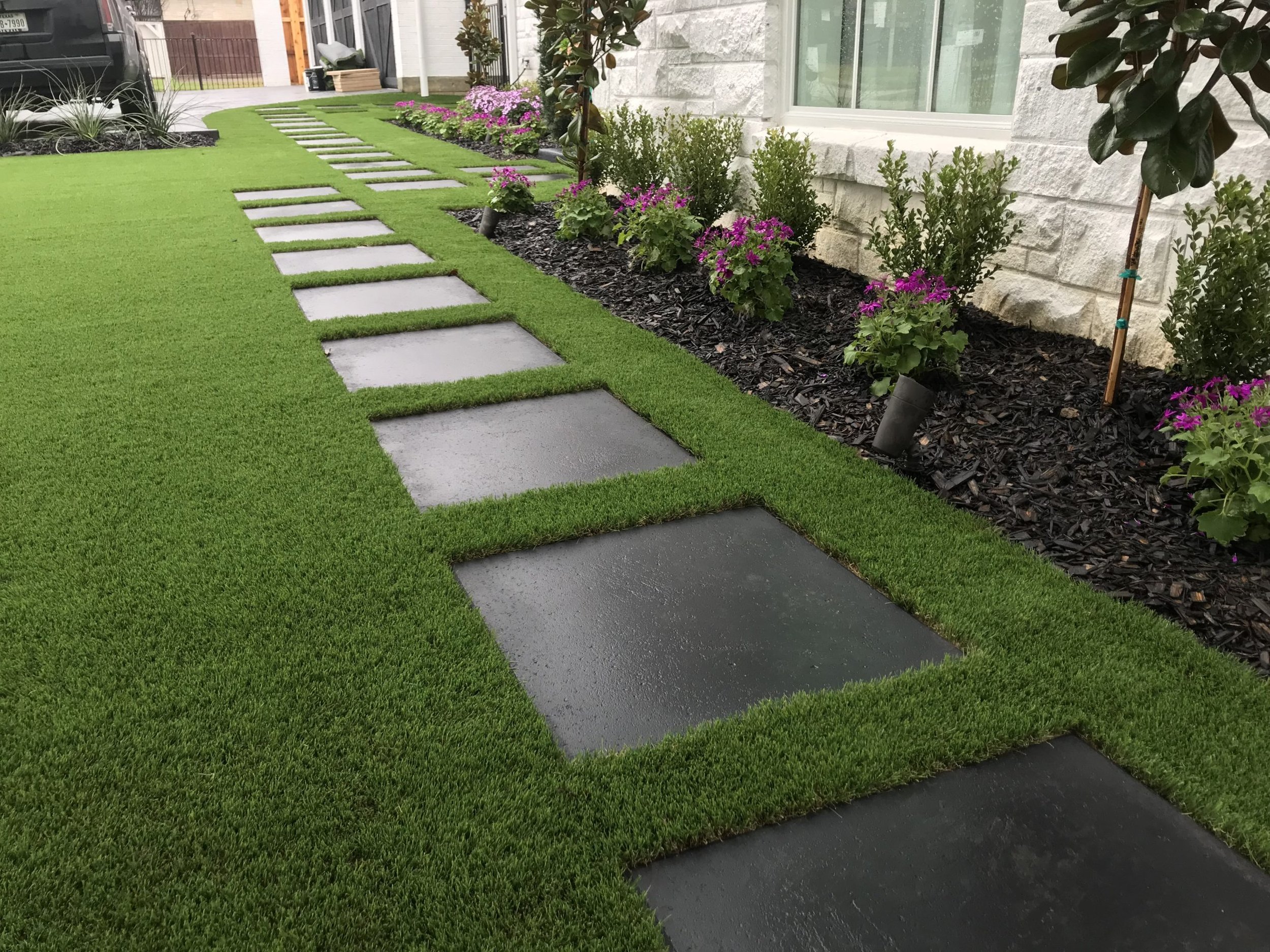Delve Into the Environmental Conveniences of Opting for Synthetic Grass Solutions
The fostering of synthetic grass services presents an engaging opportunity to address pushing environmental obstacles. By considerably lowering water use and reducing the application of dangerous chemicals, these alternatives not just advertise lasting landscape design however additionally safeguard local environments. The reduced carbon impact connected with decreased maintenance activities adds to a much more sustainable method to land administration. The ramifications of these advantages extend beyond simple conservation initiatives, increasing questions concerning their lasting influence on habitat preservation and total eco-friendly equilibrium. Discovering these measurements discloses a complex interplay worth thinking about.
Water Preservation Benefits
One of the most considerable advantages of synthetic turf is its ability to preserve water. In contrast, synthetic lawn does not need watering, dramatically reducing the total demand for water sources.
By eliminating the requirement for regular watering, man-made turf adds to lasting landscape methods and assists reduce the environmental influence of extreme water consumption. Furthermore, the conservation of water includes the reduction of runoff, which can cause soil erosion and waterway pollution.
Additionally, the installment of synthetic grass permits communities and home owners to allocate water sources a lot more effectively, concentrating on crucial uses such as alcohol consumption water and agriculture. The shift in the direction of synthetic grass not only advertises responsible water use yet likewise straightens with more comprehensive ecological objectives targeted at preserving all-natural sources.
As communities significantly focus on sustainability, the water preservation benefits of synthetic grass offer a compelling case for its adoption in property and commercial landscaping jobs.
Reduced Chemical Usage
The change to synthetic grass dramatically decreases the dependence on chemical therapies frequently utilized in natural lawn maintenance. Typical grass monitoring generally includes the application of pesticides, herbicides, and fertilizers to advertise growth and control insects. These chemicals can pose risks to human health and wellness, regional wild animals, and the environment, contributing to dirt and water contamination.
On the other hand, synthetic grass gets rid of the need for these damaging substances. Once set up, it requires marginal maintenance, largely consisting of normal cleaning and seldom infill replenishment. This reduction in chemical use not only profits the instant environment but also adds to wider eco-friendly security. By minimizing the release of synthetic substances right into the community, synthetic grass promotes healthier dirt and water supply.
Moreover, the lack of chemical overflow linked with synthetic grass installations aids protect neighborhood rivers from pollution, supporting water life and maintaining biodiversity. Arizona artificial turf. As communities increasingly prioritize sustainable methods, choosing synthetic grass provides a viable option that lines up with ecological preservation goals. With this change, home proprietors can enjoy rich green areas without endangering eco-friendly health and wellness, leading the way for a much more lasting future
Reduced Carbon Impact

In addition, the installation of synthetic grass can result in substantial water conservation. Natural yards need substantial quantities of water for watering, which not just includes to the carbon impact connected with water extraction and treatment but also pressures neighborhood water resources. On my link the other hand, synthetic grass requires minimal maintenance, calling for no watering, consequently substantially reducing water use and its associated energy prices.
Additionally, the longevity of synthetic grass adds to its decreased carbon influence. With a lifespan of as much as 15 years or more, the requirement for constant substitutes is diminished, resulting in less waste and reduced energy usage in manufacturing and getting rid of standard turf options. Generally, man-made grass presents a lasting alternative for ecologically conscious landscaping.
Environment Conservation
Habitat preservation is an essential factor to consider in the discussion over landscaping choices, specifically when contrasting man-made turf to natural grass. All-natural lawn lawns commonly require considerable maintenance, consisting of using plant foods, herbicides, and chemicals, which can adversely affect local communities. These chemicals can seep into the dirt and waterways, damaging native vegetation and fauna and interfering with regional environments.
Man-made lawn removes the need for unsafe chemicals, consequently shielding neighboring wild animals and keeping the honesty of bordering ecological communities. The installment of fabricated turf can lead to the conversion of previous grass locations right into even more biodiverse landscapes, such as pollinator yards or indigenous plant areas, which can support local wildlife.
Eventually, the change to synthetic lawn not just preserves water and lowers maintenance efforts however likewise promotes a more unified partnership in between human activities and the natural surroundings, advertising environment conservation at the same time.
Long-Term Sustainability
Lasting sustainability is a critical element in evaluating the benefits of synthetic grass over traditional lawn lawns. image source One of the most significant benefits of synthetic grass is its durability; it can last as much as 15-20 years with very little maintenance, whereas all-natural grass needs constant reseeding and substitute. This durability minimizes the requirement for constant sources, such as water, fertilizers, and chemicals, which are necessary for maintaining a healthy turf yard.
Furthermore, synthetic grass adds to a decrease in carbon emissions linked with grass care tools. Standard yards commonly need gas-powered mowers, trimmers, and blowers, all of which add to air contamination. Arizona artificial turf. On the other hand, synthetic grass gets rid of the need for such tools, advertising a cleaner environment
Moreover, the manufacturing of visit here fabricated grass progressively utilizes recycled materials, enhancing its sustainability account. As manufacturers embrace eco-friendly practices, the environmental impact of artificial turf remains to lessen.

Final Thought
The adoption of artificial grass remedies offers significant environmental advantages, including considerable water conservation, reduced dependence on dangerous chemicals, and a reduced carbon footprint. Furthermore, fabricated turf help in protecting natural environments by lessening land disturbance and advertising lasting sustainability through the usage of resilient materials. Jointly, these aspects emphasize the capacity of synthetic grass to contribute favorably to ecological health and wellness and provide a practical option to standard landscaping practices in an increasingly resource-conscious globe.
In contrast, fabricated grass does not require watering, significantly decreasing the total need for water sources. By minimizing the release of artificial substances into the community, synthetic lawn advertises much healthier dirt and water systems.
Additionally, the installation of artificial lawn can result in considerable water preservation. In comparison, synthetic grass requires marginal upkeep, calling for no watering, therefore substantially minimizing water use and its associated energy expenses.
